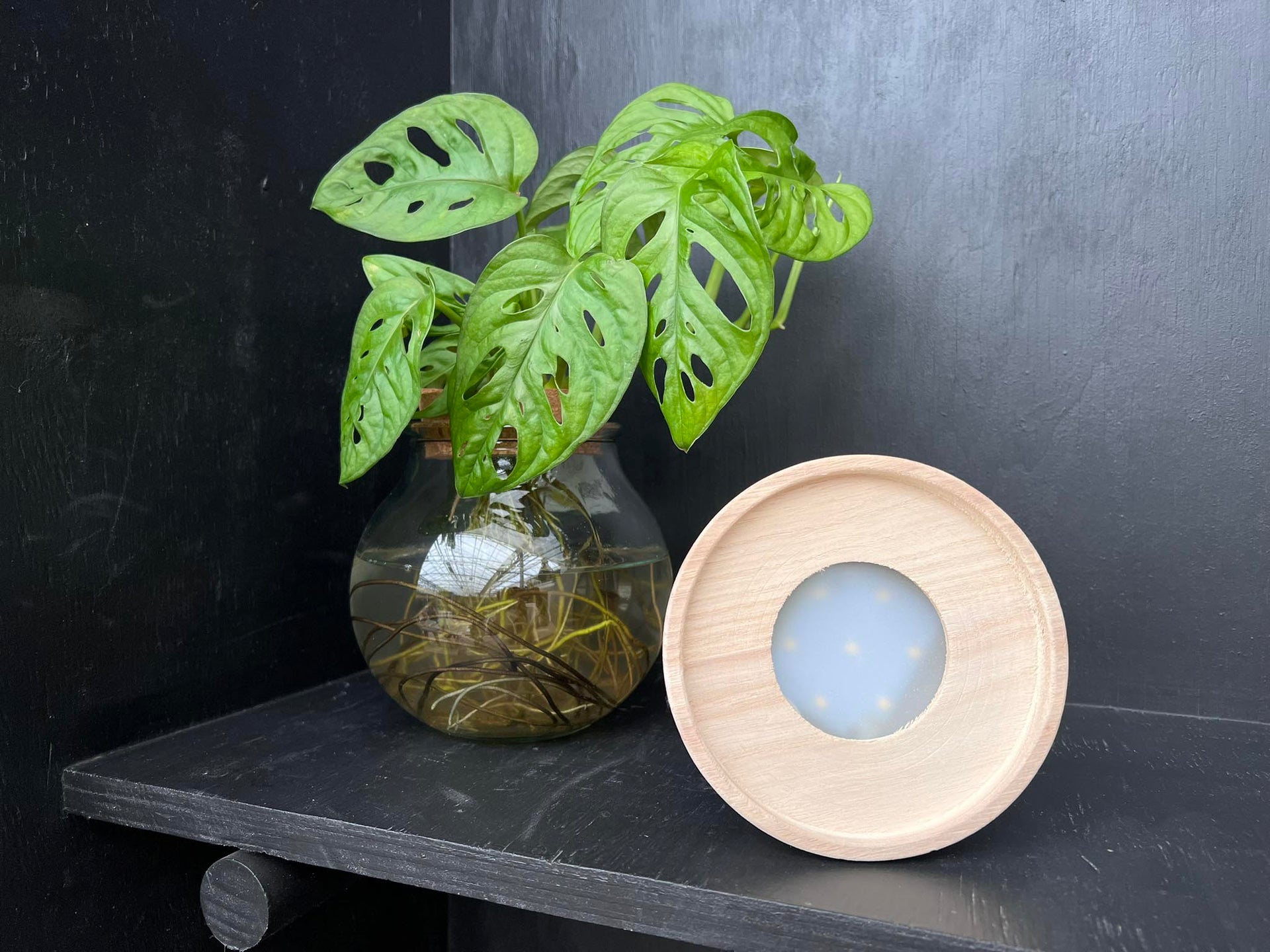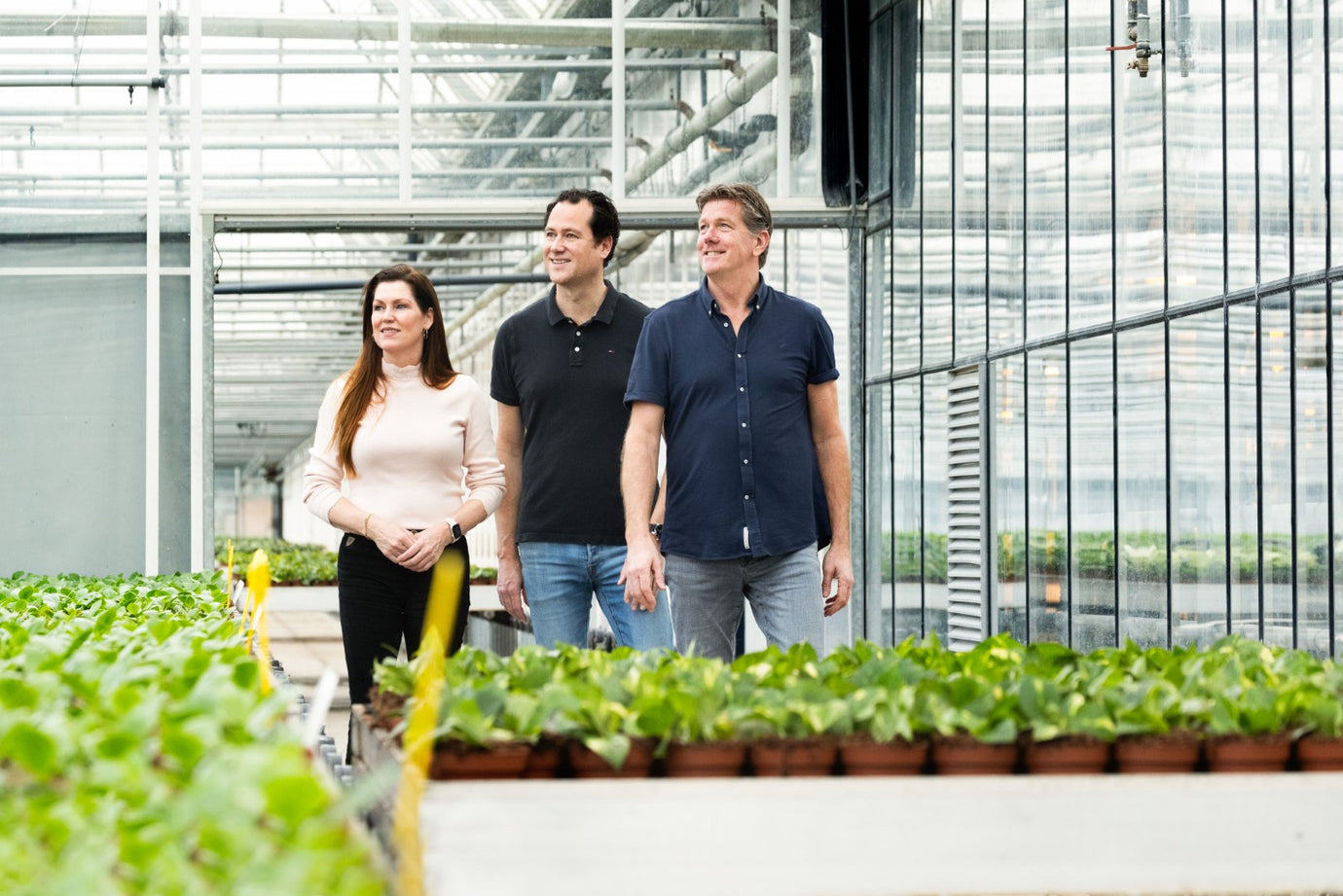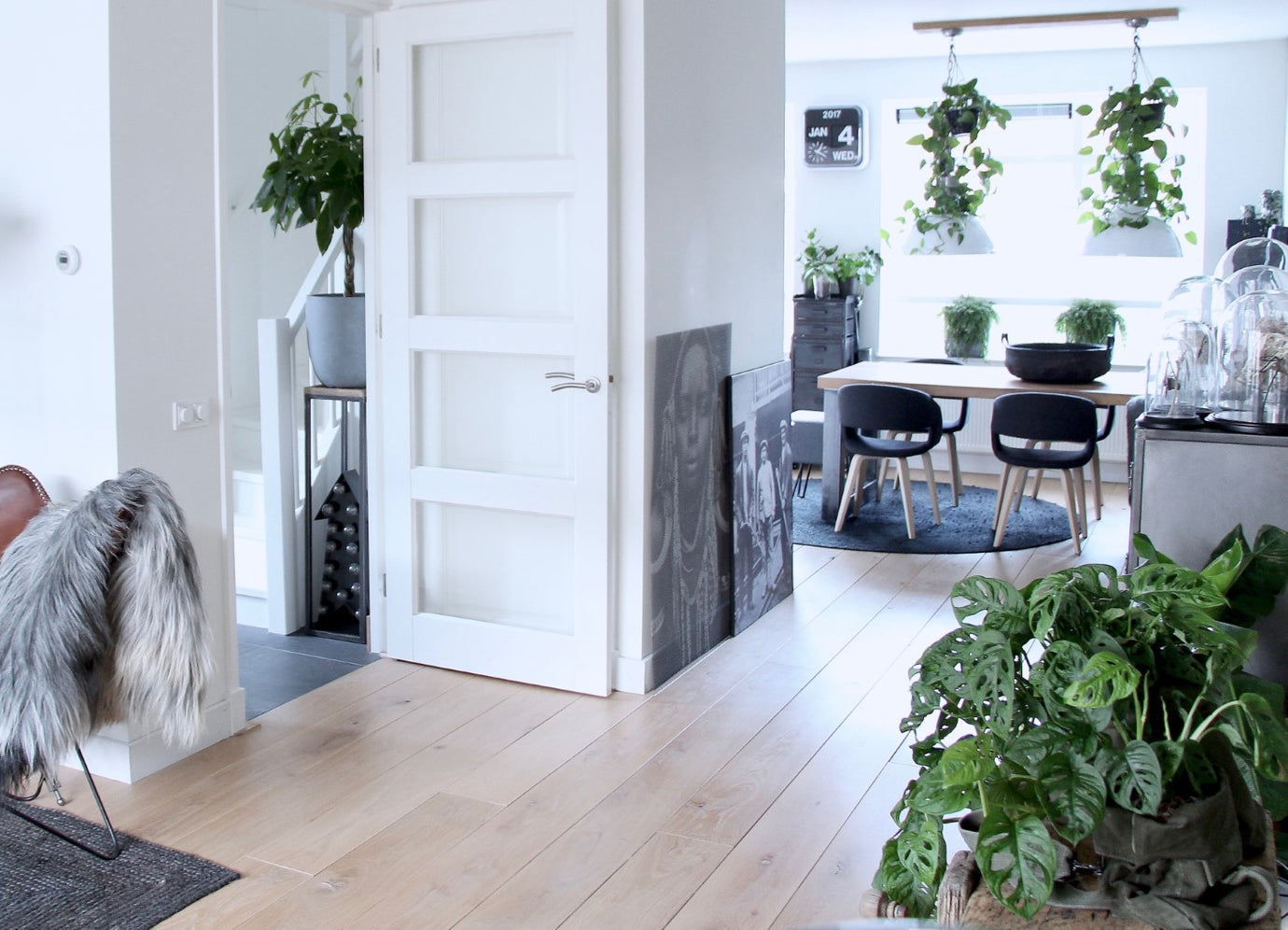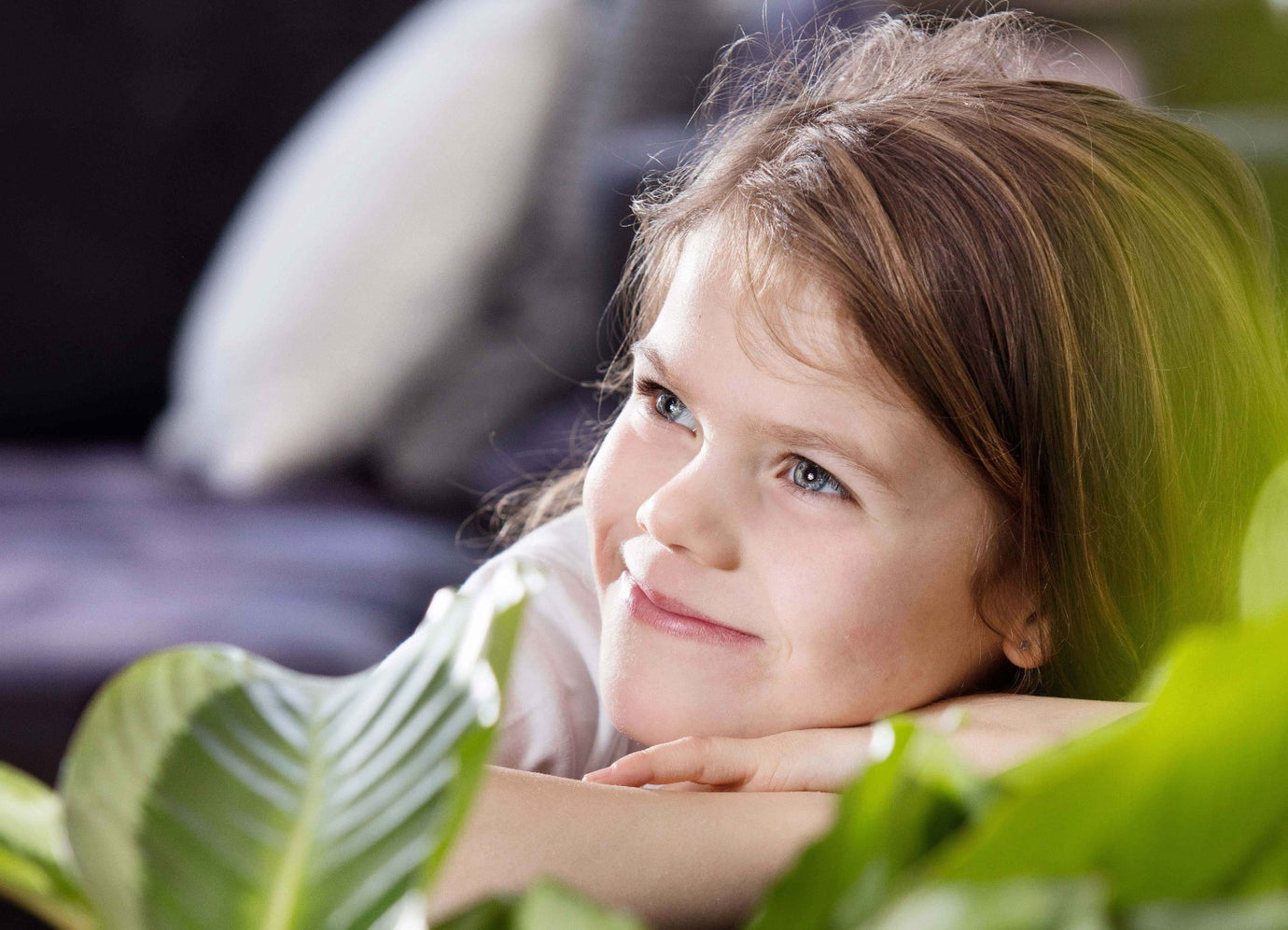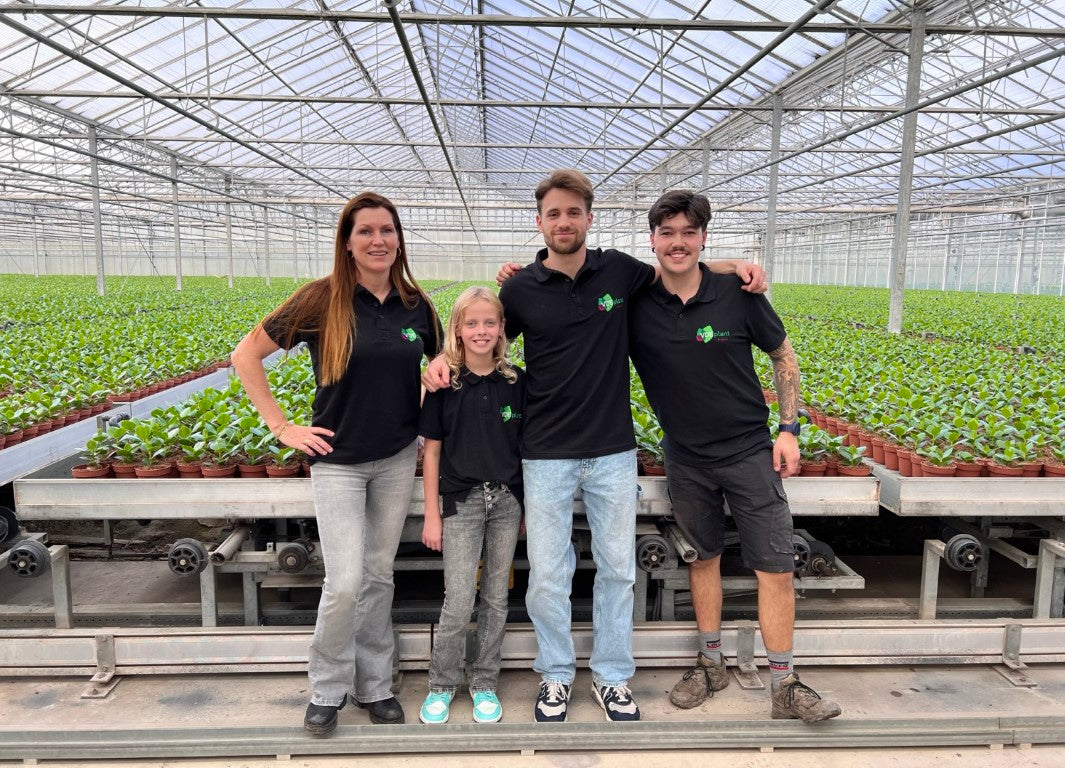Sustainability

Corporate Social Responsibility
The demand for green, healthy, social and sustainable is increasing. Corporate social responsibility and respect for people and the environment are themes that we are continuously developing as a company. In this way we work towards increasingly cleaner and sustainable production of our plants. In this blog we tell you what we do.
Integrated cultivation
In collaboration with nature, we make our crops resilient so that they have a healthy immune system. Nature is a fascinating world that works circularly and has a solution for everything. We work systematically and scout our crops every week, which prevents unpleasant surprises during cultivation as much as possible.
Our philosophy is: organic if possible, chemical if necessary, and of course within the law that Europe prescribes. Only when all biological methods do not help are chemical products used. We strive for a clean future, but we must be able to reset cultivation if necessary. In this way we meet the increasingly strict environmental requirements imposed by our customers as much as possible.
Did you know that the best and cleanest plants in Europe come from the Netherlands? Because with enormous regulatory pressure from the Dutch government, the bar is very high and nowhere in the world are plants grown more sustainably and cleaner than in the Netherlands.
Water
We use water sparingly. When it rains we collect the water and use it for our plants. We have been reusing the water we give to our plants since the early 1990s. This allows us to save on water and nutrients. We sample the water that returns from the plants and we base the feeding schedules on that. We give what the plant asks for and take soil samples to see whether the potting soil is in balance. In this way we create strong plants that can withstand a blow.
Recycled cultivation pots
For more than 20 years, our terracotta cultivation pots have been made from almost 100% recycled plastic (polypropylene) raw materials.
We say virtually 100% because it takes 1 to 2% of dye to make the terracotta color and this 1 to 2% is usually made with new material. The pigment is then added to new polypropylene raw material, which is then added to the recycled raw material when it is granulated again.
Our pot supplier collects broken cultivation pots from us and other growers and turns them into new cultivation pots. They also add household waste plastic. By using growing pots made of recycled plastic, we as a company want to contribute to a reduction in new plastic and thus reduce the amount of plastic we use as a company. All plastic that we can no longer use within our company goes to our pot supplier who processes it into new cultivation pots. A circular flow to reduce new plastic!
Climate control
The climate in the greenhouses is controlled by computer. There are stegdoppel plates on our greenhouse roof. These are 2 plastic plates on top of each other with so-called “bars” between them. The space that is then created is like rooms. There is air in that space, which insulates and therefore keeps the heat inside. Stegdoppel plates save 30% heat compared to a glass greenhouse. The crops are divided into departments within the nursery. This gives us the opportunity to use different temperature settings in the departments. Our tropical plants receive more heat than other departments, which we keep cooler. The number of m3 of gas we use has therefore decreased. We also use fans to ensure good temperature distribution.
To further reduce energy requirements, the screens are closed more often and moisture control has improved over the years. Good monitoring is important and where necessary we invest to reduce energy consumption one step further. This is a continuous process because new techniques are constantly being developed.
Energy and use of CHP
The heat we need to allow our plants to grow optimally is supplied by the use of a CHP (combined heat and power). A CHP is an engine that drives a generator through the input of gas, thus generating electricity for the electricity grid.
The cooling of this machine is done with the water in the heating network of our greenhouses. The CO2 released during the production of electricity is used in our greenhouses, because plants need CO2 to grow. By working in this way, we use the residual products (heat and CO2) that a CHP has to produce electricity.
Waste
Waste is a raw material, which is why our waste is disposed of separately. This includes green organic energy, plastic and building materials. The example of sustainability in the chain is described above, namely our cultivation pots that are made from recycled plastic.
Certification
We have been participants at MPS from the very beginning. We are certified for the labels MPS A – MPS GAP – MPS Social – GRASP. These sustainability certifications give us insight into what we do and where we can improve. We also calculate the footprint of our products.
A clean future does not just happen. We would like to commit ourselves to a better and clean living environment for ourselves, our employees and future generations.
The photos were taken for the Horticulture Entrepreneurship Award by Fotostudio Vlekke.
